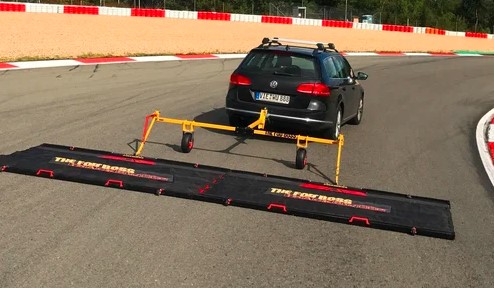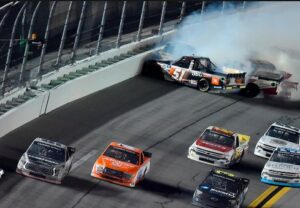
The Cleanup Process: Handling Track Wrecks with Precision
Track wrecks are an unfortunate but inevitable aspect of motorsport events, posing significant challenges to organizers, teams, and safety crews alike. Efficiently managing track wrecks is crucial for maintaining safety, minimizing disruptions, and ensuring the smooth operation of racing events. In this comprehensive guide, we’ll explore the intricacies of cleaning up track wrecks, highlighting best practices, safety protocols, and the importance of teamwork in mitigating the impact of incidents on the racetrack.

Understanding the Cleanup Process
Assessing the Situation
When a track wreck occurs, safety officials and track personnel must promptly assess the severity of the incident and any potential hazards present. This involves evaluating the extent of vehicle damage, the presence of debris on the track surface, and the condition of any drivers involved in the accident.
Implementing Safety Measures
Safety is paramount during the cleanup process, with crews taking immediate steps to secure the area and protect personnel from harm. This may include deploying caution flags, closing off affected sections of the track, and ensuring that emergency responders are on standby to provide assistance if needed.
Clearing Debris
Once the scene has been secured, the focus shifts to clearing debris from the track to restore safe racing conditions. Safety crews equipped with specialized tools and equipment work swiftly to remove wreckage, shattered parts, and other debris that could pose a hazard to drivers or interfere with the flow of the race.
Addressing Fluid Spills
Track wrecks often result in fluid spills, including oil, fuel, and coolant, which can create slick surfaces and increase the risk of further accidents. Crews employ absorbent materials and containment measures to address spills promptly, preventing environmental contamination and ensuring the safety of competitors.
The Role of Safety Crews and Officials
Trained Personnel
Safety crews and track officials play a crucial role in coordinating the cleanup efforts and maintaining order during track wrecks. These individuals undergo rigorous training to respond quickly and effectively to emergencies, prioritizing safety while minimizing disruptions to the racing schedule.
Communication and Coordination
Effective communication and coordination are essential elements of successful track cleanup operations. Safety crews work in tandem with race officials, emergency responders, and track personnel to share information, coordinate actions, and implement safety protocols in a timely manner.
Adherence to Safety Protocols
Safety crews adhere to strict safety protocols and guidelines to ensure that cleanup operations are conducted in a safe and efficient manner. This includes wearing appropriate personal protective equipment (PPE), following established procedures for debris removal and fluid cleanup, and maintaining clear lines of communication at all times.
Challenges and Considerations
Time Constraints
One of the primary challenges of cleaning up track wrecks is the need to work quickly and efficiently to minimize race delays. Safety crews must balance the urgency of restoring safe racing conditions with the meticulousness required to address potential hazards effectively.
Environmental Impact
Track wrecks can have environmental repercussions, particularly in cases where fluid spills occur. Safety crews must take precautions to prevent contaminants from entering soil, waterways, or sensitive ecosystems, utilizing environmentally friendly cleanup methods whenever possible.
Psychological Impact
Witnessing or participating in a track wreck can have a profound psychological impact on drivers, team members, and spectators alike. Safety crews must be prepared to provide emotional support and assistance to individuals. To those affected by the incident, ensuring that their well-being is prioritized alongside physical safety.
Winchester Speedway: A Case Study
Incident Management at Winchester Speedway
Winchester Speedway, a renowned racing venue known for its high-speed oval track. It has experienced its share of track wrecks over the years. Safety crews at the Speedway are well-trained and equipped to handle incidents swiftly and effectively. Effectively drawing on their experience and expertise to maintain safety and order during races.
The Importance of Preparedness
Preparedness is key to managing track wrecks at Winchester Speedway. With safety crews conducting regular drills and simulations to hone their skills and familiarize themselves with the unique challenges of the racetrack. This proactive approach ensures that crews are ready to respond effectively to emergencies as they arise.
Community Support and Collaboration
The success of cleanup efforts at Winchester Speedway gains strength though the support and collaboration of the racing community. Teams, drivers, and spectators rally together to assist safety crews in clearing debris, offering encouragement and solidarity in the aftermath of track wrecks.
Conclusion
Cleaning up track wrecks is a complex and challenging endeavour that requires teamwork, skill, and dedication. Prioritizing safety, communication, and preparedness. Safety crews can effectively manage incidents on the racetrack, ensuring the well-being of drivers, teams, and spectators. All while maintaining the integrity of the racing event.
